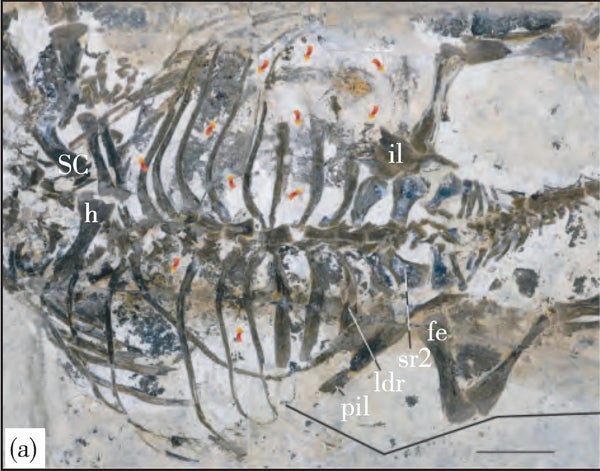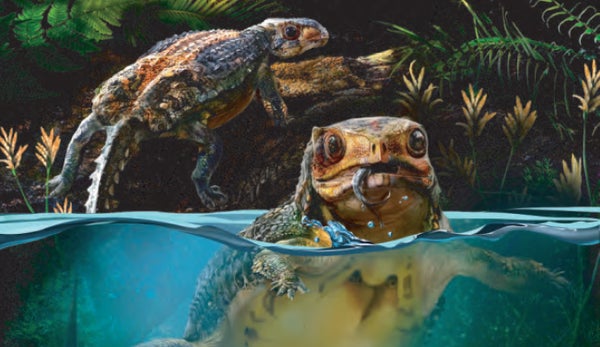This article was published in Scientific American’s former blog network and reflects the views of the author, not necessarily those of Scientific American
Ankylosaurs are weird. I'm not just talking about the lavish displays of osteoderms jutting every which way from their bodies. Look inside the skull of an ankylosaur, for example, and you may wonder how these armored dinosaurs fed themselves. Their teeth were tiny and, while decent at cutting through plants, didn't allow them to chew. Now a new discovery has made one ankylosaur seem even stranger still. Liaoningosaurus, paleontologist Ji Qiang and colleagues write, may have fed on fish.
The dinosaur wasn't as imposing as the huge, club-tailed celebrities of its kind, like Ankylosaurus itself. Liaoningosaurus paradoxus lived much earlier, around 125-121 million years ago in what is now China, and the largest of their species were a little more than a foot long. Up until now, they were thought to be herbivores like the rest of their family. But now Ji and coauthors report that one Liaoningosaurus appears to have a belly full of fish.
The paleontologists consider three different ways this association might have come to be. Maybe the little dinosaur died and came to rest on top of a mass of fish that had already settled to the bottom. It could be coincidence. Then again, Ji and coauthors write, maybe the fish were sheltering inside the dead dinosaur when they, too, perished. But the favored interpretation in the new paper is that Liaoningosaurus was a dinosaur equivalent of a turtle, swimming around and snaffling up little fish.

The little Liaoningosaurus. Red arrows mark fish remains. Credit: Ji et al. 2016
On supporting science journalism
If you're enjoying this article, consider supporting our award-winning journalism by subscribing. By purchasing a subscription you are helping to ensure the future of impactful stories about the discoveries and ideas shaping our world today.
A fish-eating ankylosaur isn't as outlandish as it might first sound. After all, as blog neighbor Darren Naish has often pointed out, there are herbivorous animals today that occasionally eat meat. Ji and colleagues are proposing something a little different for Liaoningosaurus - that the dinosaur was adapted to swimming around after piscine prey - but, even so, it's somewhat surprising that paleontologists haven't yet found evidence of a veggisaur having a cheat day.
But is this new Liaoningosaurus specimen the evidence of a plant-eating dinosaur gone carnivore we've been waiting for? Maybe not. Even though Ji and coauthors say that the coincidence of the dinosaur being buried with the fish is too "speculative", neither do they refute the possibility. The fish are in pieces, yes, but they're also scattered through the body cavity instead of being constrained to the gut. Additional evidence - such as acid etching on the fish and a CT scan showing the relationship of all the fossiliferous pieces - would be needed to confirm that Liaoningosaurus was doing something totally different from other ankylosaurs.
Paleontology is fueled by the yearning to envision prehistoric life. Yet the discipline is based on looking at scenes of death and burial. The place an organism is interred may not represent its natural habitat, and the way bodies are covered up may wash in other organisms that the species had no interaction with in life. To examine a saurian's life, we have to first recognize that we're starting with the story of its afterlife.
Reference:
Ji, Q., Wu, X., Cheng, Y., Ten, F., Wang, X., Ji, Y. Fish hunting ankylosaurs (Dinosauria, Ornithischia) from the Cretaceous of China. Journal of Geology. doi: 10.3969 /j.issn.1674-3636.2016.02.183
